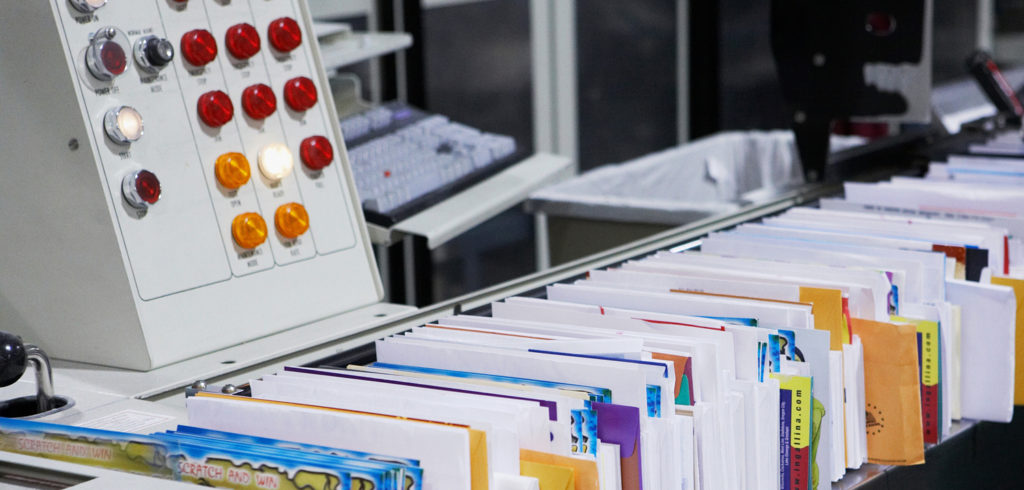The USPS is set to increase the cost of the standard first-class stamp by 10%. Ian Kerr (Postal Hub Podcast) and Marek Różycki (Last Mile Experts) look at the implications for the letters service and the USPS delivery network
The US Postal Service (USPS) has applied for an increase to postage rates, which if approved will take effect from January 27, 2019.
Standard first class stamps will increase by 10%, from US$0.50 to US$0.55. Bulk mailers will face a smaller increase, with deep-sorted bulk mail prices increasing by a fraction of a cent.
Impact on letter volumes
Any postage price increase carries the risk of encouraging customers to find cheaper ways to communicate. US postal consultant Mark Fallon, CEO and president of the Berkshire Company, says the deliberate move to increase single-piece stamps by five cents allows the USPS to achieve the “simplicity of structure” as mandated by law. However, he is concerned about the ancillary effects.
“The increase may have the unintended consequence of driving more bill payment online. Single-piece mail has the fastest eroding volumes – 6% for the past two years – and this new increase may hasten its decline,” he says.
Australia Post’s most recent price increase saw a jump from US$0.70 to US$1. At the time, Australia Post noted that e-substitution of letters had been occurring for some years, even when postage rates were lower.
Let’s remember that price is not the only factor affecting letter volumes. There are external economic, practical and societal factors that come into play.
Restrictions and a new rate structure
This rate increase was tied to the US consumer price index as required by the rate structure established by the Postage Accountability and Enhancement Act (PAEA) of 2006.
In December 2017, the Postal Regulatory Commission (PRC) proposed a new rate structure that would allow the USPS an additional 2% above CPI to increase rates. There’s no word from the PRC when the final rules will be published.
“When the final rules are published, the USPS will probably take advantage of the opportunity to improve their financial situation. With that in mind, mailers should expect another increase in 2019,” says Mark Fallon.
Investment in the last mile
The US Postal Service is currently engaged in an extended tender process to select its next generation of delivery vehicles. Upgrading the fleet will be a costly exercise. A postage rate increase could play an important role in financing the new fleet.
The alternatives to a postage price rise are well known, including reducing the number of delivery days, consolidating sorting centers, changing delivery standards, and introducing more efficiency in sorting operations.
Most postal operators are continually seeking efficiency measures, whether in sorting centers, by optimizing delivery routes, or squeezing delivery contractor payment rates. There are limits to these efficiency measures, meaning that eventually either the price has to go up, or delivery standards have to change.
The USPS’s letter service is perceived to be a key tool for US businesses and consumers. Letter volumes are declining, but remain strong. These facts suggest that there’s little likelihood in the short term of the USA following Denmark’s example, where standard letters are delivered one day per week.
What will the future bring?
The long term trend in letters is clear: falling volumes and increasing fixed costs. There will come a point at which the letters service will become marginal and uneconomic to provide. In the years to come, could the USPS raise enough profit in parcels to prop up the letters service? Will the government need to subsidize the letters service? Or will the government be forced to reform the letters service?
The wildcard is privatization. USPS senior management and the new board of governors have a tough task ahead of them.
Authors:
 Ian Kerr is the founder and host of the Postal Hub Podcast, the weekly podcast for the postal and delivery sectors.
Ian Kerr is the founder and host of the Postal Hub Podcast, the weekly podcast for the postal and delivery sectors.
 Marek Różycki is managing partner at Last Mile Experts, specializing in CEP and e-commerce last-mile advisory.
Marek Różycki is managing partner at Last Mile Experts, specializing in CEP and e-commerce last-mile advisory.


